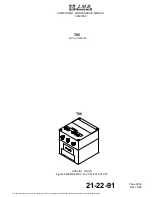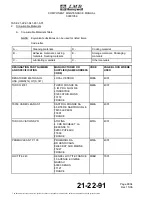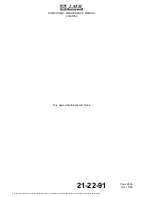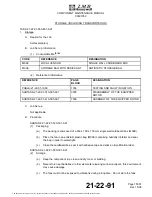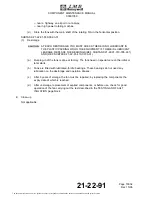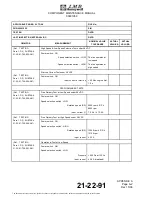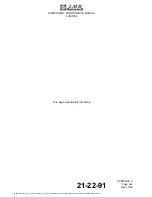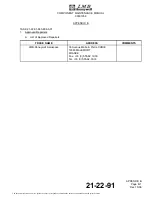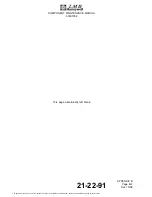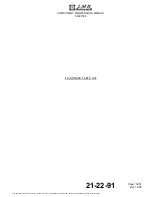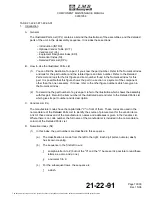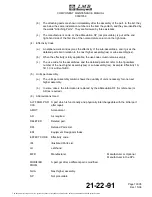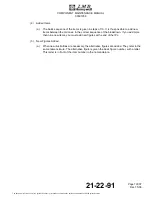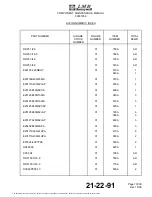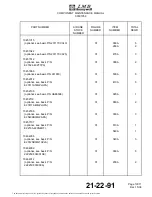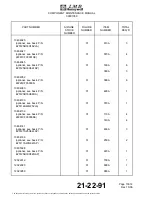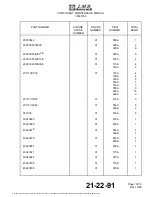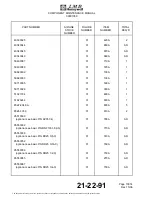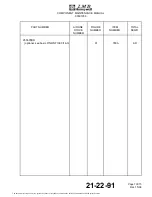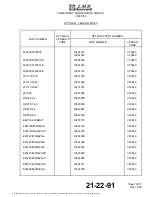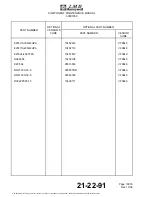
COMPONENT MAINTENANCE MANUAL
00001059
TASK 21-22-91-871-802-A01
1.
Introduction
A.
General
The Illustrated Parts List (IPL) contains a list and the illustrations of the assemblies, and the detailed
parts of the unit, in the disassembly sequence. It includes these sections:
– Introduction (INTRO),
– Optional Vendor Table (OVT),
– Vendors List (VL),
– Equipment Designator Index (EDI),
– Numerical Index (NI),
– Detailed Parts List (DPL).
B.
How to Use the Illustrated Parts List
(1)
You can find the illustration for a part, if you know the part number. Refer to the Numerical Index
and look for the part number and the related figure and item number. Refer to the Detailed
Parts List and look for the first figure and item number found in the Numerical Index for this
part. It is possible that this figure shows the part in a section or a system of the component
other than the one necessary. If it does, refer to the other figure numbers which are given in
the Numerical Index.
(2)
To determine the part number of a given part, refer to the illustration which shows the assembly
with this part. Record the item number of the illustrated part and refer to the Detailed Parts List,
which gives its part number and its description.
C.
Vendors List (VL)
The manufacturer codes have the capital letter "V" in front of them. These codes are used in the
nomenclature of the Detailed Parts List to identify the source of procurement for the vendor items.
A list of these codes and of the manufacturer’s names and addresses is given in the Vendors List.
Where there is no code number, the full name of the manufacturer is included in the nomenclature
column of the Detailed Parts List.
D.
Numerical Index (NI)
(1)
In this index, the part numbers are classified in this sequence:
(a)
The classification is made from the left to the right. Each digit (letter, numeral, dash)
has its own meaning.
(b)
The sequence in the first left row is:
1
an alpha letter A to Z (but not the "O" and the "I", because it is possible to read these
letters as a zero and a one),
2
a numeral 0 to 9.
(c)
For the subsequent rows, the sequence is:
1
a dash,
21-22-91
Page 10003
Dec 15/06
The document reference is online, please check the correspondence between the online documentation and the printed version.

